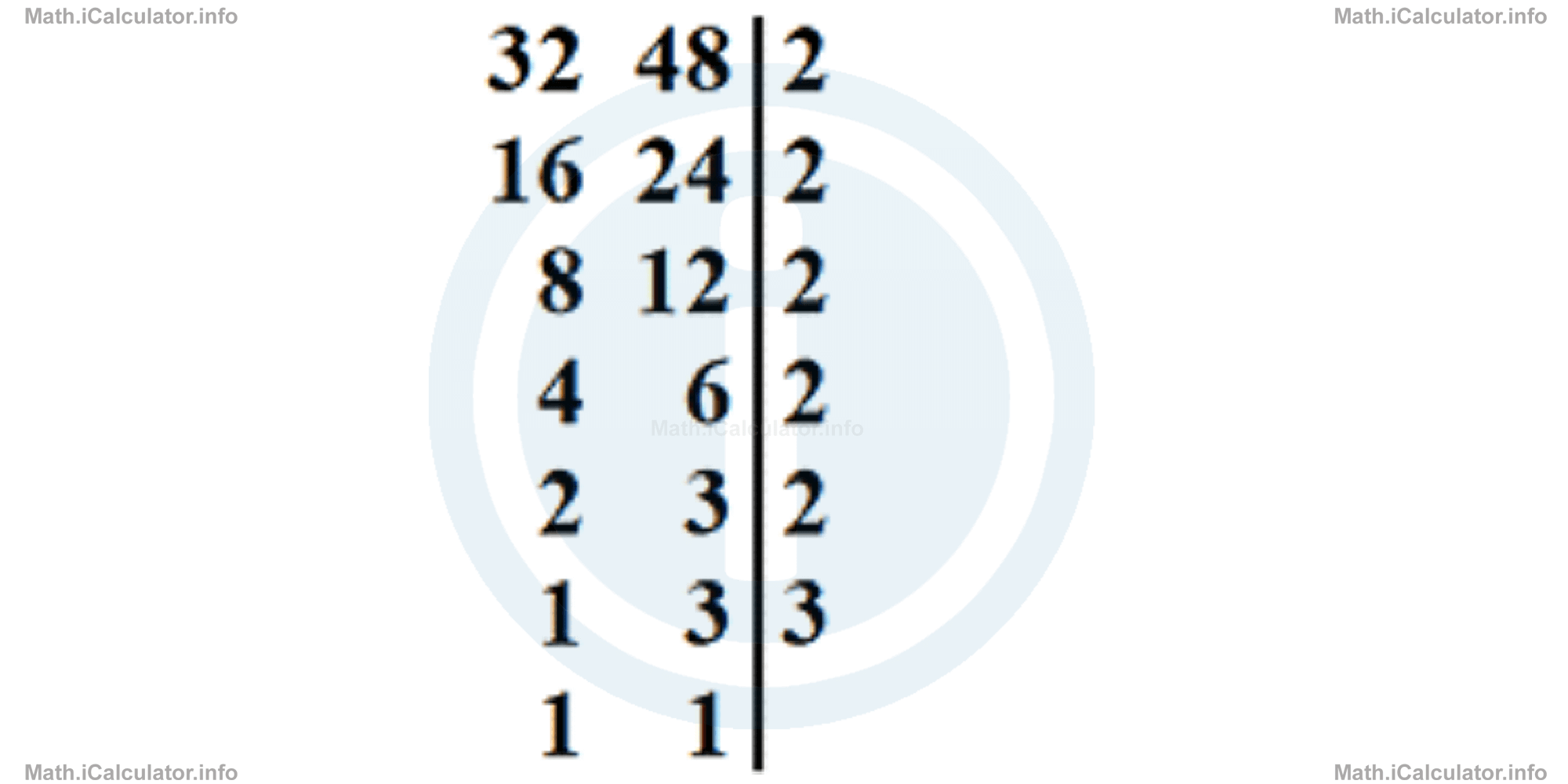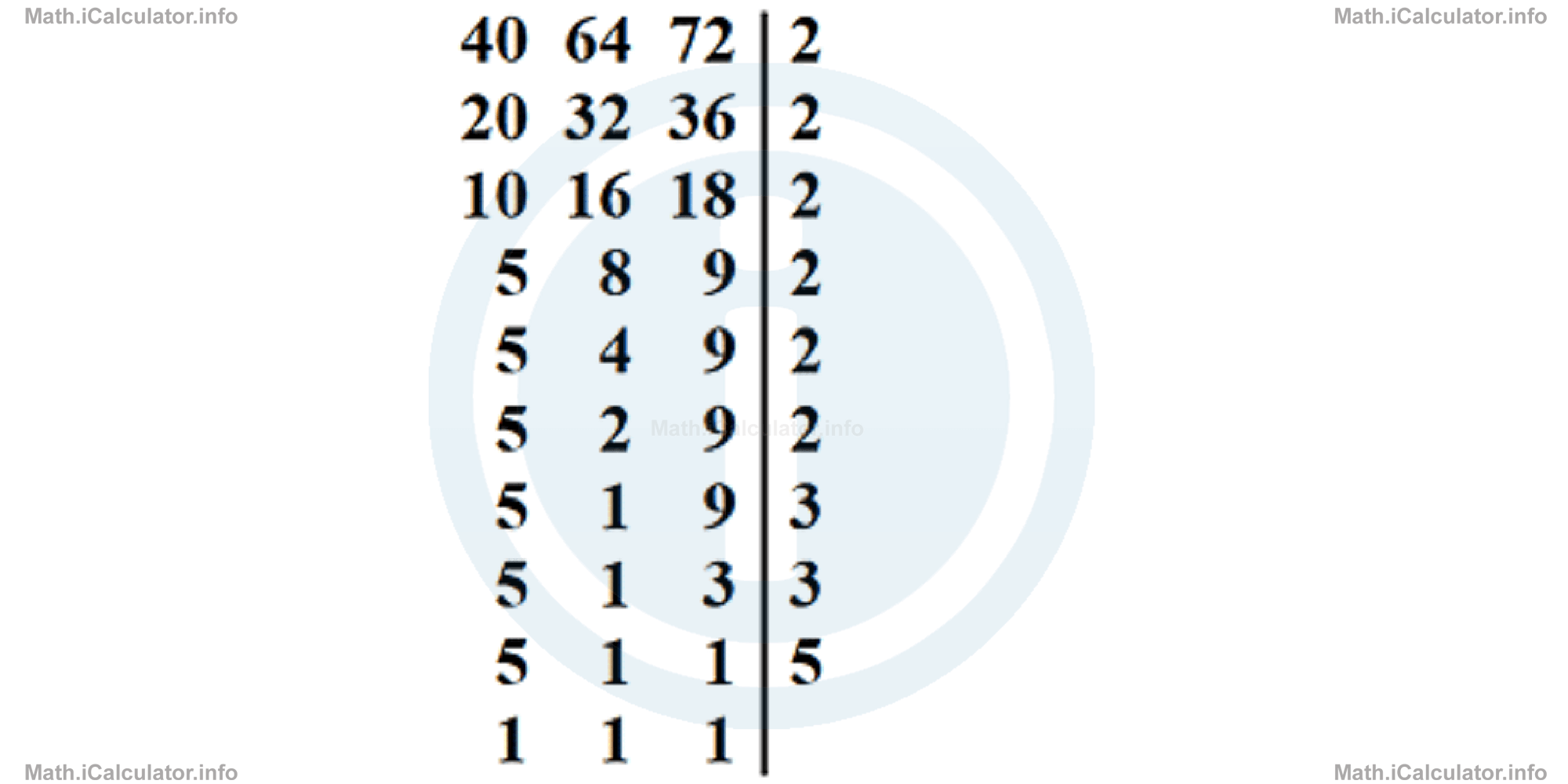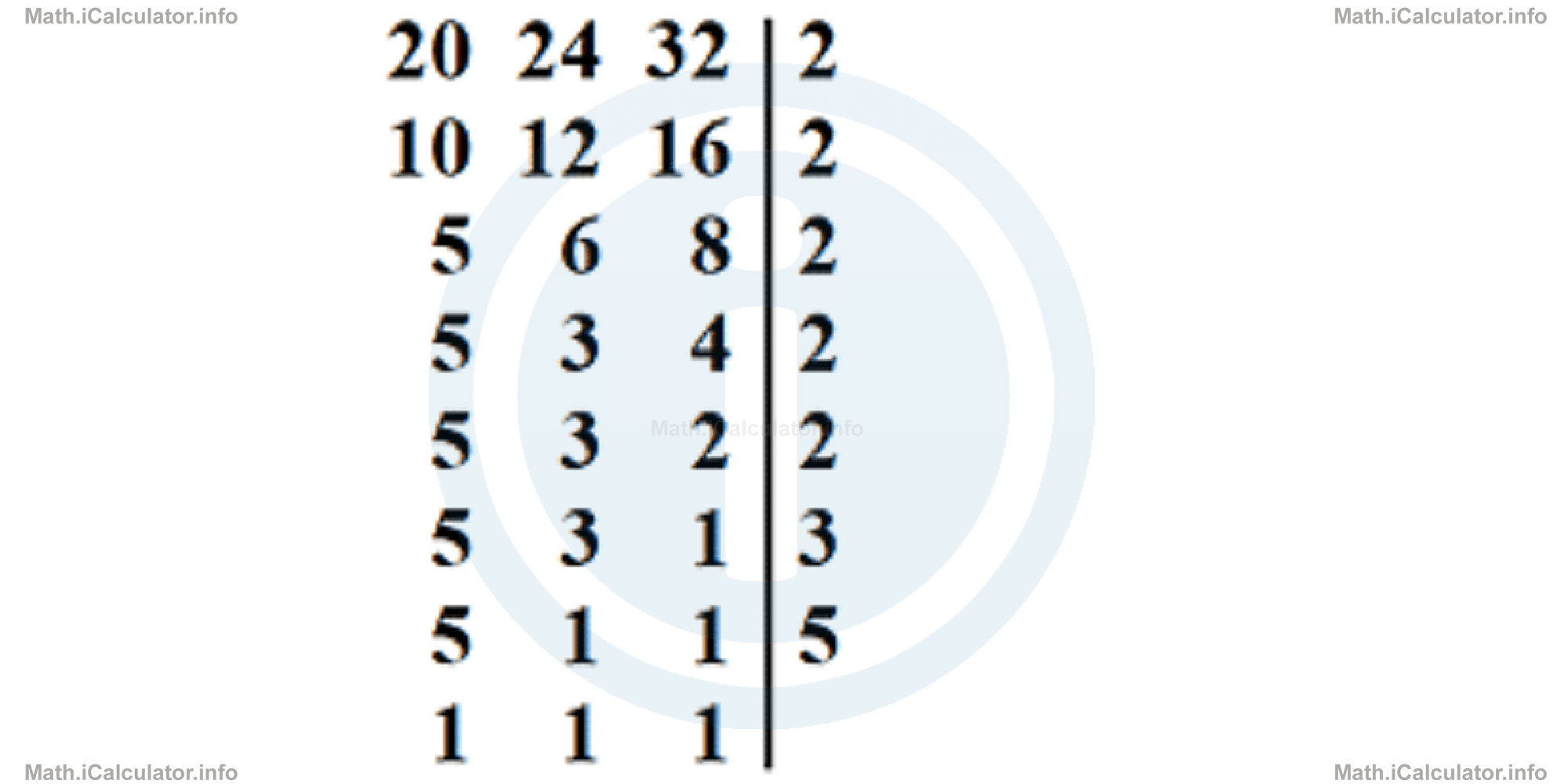Menu
Math Lesson 1.5.6 - Finding the LCM of Two or More Numbers
Please provide a rating, it takes seconds and helps us to keep this resource free for all to use
Welcome to our Math lesson on Finding the LCM of Two or More Numbers, this is the sixth lesson of our suite of math lessons covering the topic of Multiples, Factors, Prime Numbers and Prime Factorization including LCM and GCF, you can find links to the other lessons within this tutorial and access additional Math learning resources below this lesson.
Finding the LCM of Two or More Numbers
The method used in the last example, that consists of writing the first multiples of two or more numbers, and then identifying the common ones and considering only the least common multiple, is OK but it is a bit long winded and time-consuming. A much easier method is the tabular method discussed in the previous paragraph where we found the prime factors of a number, the difference this time is that it is applied for two or more numbers simultaneously. The division with a certain prime number continues until at least one of the numbers involved is divisible with that prime number. Then, all prime factors written on the right of the vertical line are multiplied with each other to find the least common multiple (LCM) of the given numbers. Let's see an example to clarify this point.
Example 5
Find the least common multiple of 32 and 48.
Solution 5
We use the method described above where the two numbers are written on the left of the vertical line and the prime factors on its right. We have:

Now, we must multiply all factors on the right to find the LCM of 32 and 48. We have
The tabular method can also be applied for 3 or more numbers without any considerable increase in the time required for solving it. Again, we continue the division with a certain prime number until at least one of number is divisible with it. Let's consider another example.
Example 6
Calculate the LCM of 40, 64 and 72.
Solution 6
We have

Thus, we obtain for the least common multiple of the above numbers:
It would have be a very tedious to write all multiples of the three numbers and then look for the least common one as we did earlier for 8 and 12 but the approach is well worth understanding.
The least common multiple of two or more numbers has a wide range of applications in practice. For example, if we want to add or subtract two or more fractions with different denominators, we must find a common denominator first, as a denominator of a fraction represents the way an item is divided. It is obvious that items must be divided in the same way to make them comparable or exchangeable. Hence, we must find a common denominator first, and the best thing to do is to find the least common denominator, as the numbers involved are the smallest possible. For this, we can use the method described above for finding the LCM of two or more numbers.
Another example of LCM used in practice is to find the minimum number of items to use in a situation to reduce costs. Let's see an example.
Example 7
A store sells boxes of pencils, erasers and pens. These boxes contain 20, 24 and 32 items each respectively. What is the minimum number of boxes for each item one teacher must buy if he has to distribute them to his students, where each student must take a set containing a single piece from each item?
Solution 7
First, we must calculate how many items from each category the teacher must buy to complete each student with one of them. Since we are interested about the minimum number possible of items, we have to find the LCM of 20, 24 and 32. We have

Hence, we have for the minimum number of items from each category:
Thus, the minimum number of pencil boxes to purchase is
Likewise, for the minimum number of eraser boxes, we have
Finally, for the minimum number of pen boxes, we have
More Multiples, Factors, Prime Numbers and Prime Factorization including LCM and GCF Lessons and Learning Resources
Whats next?
Enjoy the "Finding the LCM of Two or More Numbers" math lesson? People who liked the "Multiples, Factors, Prime Numbers and Prime Factorization including LCM and GCF lesson found the following resources useful:
- Lcm Feedback. Helps other - Leave a rating for this lcm (see below)
- Arithmetic Math tutorial: Multiples, Factors, Prime Numbers and Prime Factorization including LCM and GCF. Read the Multiples, Factors, Prime Numbers and Prime Factorization including LCM and GCF math tutorial and build your math knowledge of Arithmetic
- Arithmetic Video tutorial: Multiples, Factors, Prime Numbers and Prime Factorization including LCM and GCF. Watch or listen to the Multiples, Factors, Prime Numbers and Prime Factorization including LCM and GCF video tutorial, a useful way to help you revise when travelling to and from school/college
- Arithmetic Revision Notes: Multiples, Factors, Prime Numbers and Prime Factorization including LCM and GCF. Print the notes so you can revise the key points covered in the math tutorial for Multiples, Factors, Prime Numbers and Prime Factorization including LCM and GCF
- Arithmetic Practice Questions: Multiples, Factors, Prime Numbers and Prime Factorization including LCM and GCF. Test and improve your knowledge of Multiples, Factors, Prime Numbers and Prime Factorization including LCM and GCF with example questins and answers
- Check your calculations for Arithmetic questions with our excellent Arithmetic calculators which contain full equations and calculations clearly displayed line by line. See the Arithmetic Calculators by iCalculator™ below.
- Continuing learning arithmetic - read our next math tutorial: Divisibility Rules
Help others Learning Math just like you
Please provide a rating, it takes seconds and helps us to keep this resource free for all to use
We hope you found this Math tutorial "Multiples, Factors, Prime Numbers and Prime Factorization including LCM and GCF" useful. If you did it would be great if you could spare the time to rate this math tutorial (simply click on the number of stars that match your assessment of this math learning aide) and/or share on social media, this helps us identify popular tutorials and calculators and expand our free learning resources to support our users around the world have free access to expand their knowledge of math and other disciplines.
Arithmetic Calculators by iCalculator™
- Arithmetic Expressions Calculator
- Decimal Hexadecimal Number Calculator
- Hexadecimal Decimal Number Calculator
- Hindu Arabic To Roman Numbers Converter
- Identifying Factors Number Calculator
- Least Common Multiple And Greatest Common Factor Calculator
- Prime Numbers Identifier
- Greatest Common Divisor Calculator
- Number Format Converter
- Math Powers
- Square Root Calculator
- Exponents Calculator
- Binary Calculator
- Binary To Decimal Calculator
- Common Factors
- Imperial Converter
- Imperial To Metric Converter
- Length Converter
- Metric Converter
- Metric Units Conversion Calculator
- Roman Numerals Converter
- Rounding Numbers Calculator
- Round To Nearest Multiple Calculator
- Sig Fig Calculator
- Unit Rate Calculator
- Weight Conversion Calculator